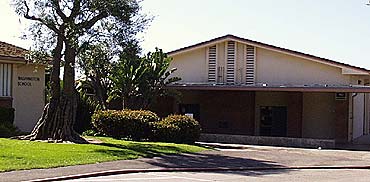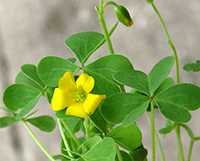Nancy's Story |
| · |
Buffalo, June, 1951 |
| · |
Williamsville, 1953 |
| · |
Williamsville, 1954 |
| · |
Williamsville, 1955 |
| · |
Williamsville, 1956 |
| · |
Williamsville, 1957 |
| · |
Cross Country, 1957 |
| · |
Santa Barbara, 1957 |
| · |
Santa Ana, 1958 |
| · |
Santa Barbara, 1958 |
| · |
Santa Barbara, 1959 |
| · |
Santa Barbara, 1960 |
| · |
Brookings, 1960 |
| · |
Santa Barbara, 1960 |
| · |
Santa Barbara, 1961 |
| · |
Santa Barbara, 1961 |
| · |
Santa Barbara, 1962 |
| · |
Santa Barbara, 1963 |
|
Santa Barbara, 1957-58
In September, I started first grade at Washington Elementary School in Santa
Barbara.
Mrs. Moss was my first grade teacher. She had black curly hair and I thought she was
the prettiest and most wonderful teacher in the school. Every child in
the class got a Dick and Jane reading book and we got to sit in a reading circle each
day and take turns reading aloud. I had taught myself to read by remembering
the shapes of words as a whole and it was exciting to learn to use letters to sound
things out. The readers were written in ascending levels of difficulty and I still
remember the thrill of learning words like 'pumpkin' and 'birthday' that were made of
two parts that were put together to make the whole word.
In October of 1957, shortly after school began, a shocking thing occurred: the
Russians launched the first satellite. I had not known about Russians before, but I
quickly learned that the Russia was very a bad country: that they kept a lot of people
in prison and wanted to take over the U.S. and kill us all or put us in prison,
too. No one talked about anything else. How did they do it before
us? What bad things might they do with that satellite? How would
we ever catch up? The fact that Sputnik was less than two feet across
was not widely discussed and perhaps not even known: it seemed a simple logical
jump from a single satellite to having a full-size enemy space station orbiting
overhead.
In Buffalo, we only got one TV channel, but in Santa Barbara, we could get two
channels of black-and-white TV: KEY-T, channel 3, the local channel and KTLA,
channel 5, from Los Angeles. We were allowed to watch half an hour of
black-and-white cartoons prior to dinner and the only choice was Skipper Frank and
Popeye. The Sputnik launch remains remarkable in my mind not only because of the
event itself but also because the entire family watched the TV news about it.
Printed periodicals were a more important way to get information than
television. Every class at school had a subscription to The Weekly Reader,
a four-page mini "newspaper" published by Scholastic Books.
Scholastic has a special place in my heart. Mom did some consulting for them and
they paid my way in the late 1980's to accompany her to a board meeting (or some such)
in New York. It was the first time I'd been there as an adult and I loved the
museums, although the musical we saw (Big River) was pretty lame. Once a
year, there was a book fair where Scholastic sent home a long list of paperback books
that could be purchased very inexpensively; for every book that a child bought, the
teacher got "credit" that could be used to purchase classroom books.
Needless to say, we all wanted to buy every book on the list, but our parents very
sensibly gave us each a budget that we could spend. It was always a
wonderful day when the new paperbacks arrived and I could hardly wait to take them home
to read.
Reading was such a treat! To this day, I'd much rather read a new book than go
to a movie. In addition to the Scholastic paperbacks, we had all of Uncle
Lee's old Literary Guild books plus some books that had been Mom's when she was
little. The Cat in the Hat was first published in 1957, we had a copy and I
LOVED that book! Every year there would be a new Dr. Seuss book and they were all
exciting and funny.
I also had my very own subscription to Jack and Jill magazine. It
arrived in the mail every month with a little sticker on the cover that had my name on
it. The magazine included some news, stories, occasional paper dolls to cut
out and play with (I thought those were stupid) and a page of riddles that were so lame
that even a first-grader would recognize the fact: (What did the Mayonnaise say to the
Refrigerator? "Shut the door, I'm dressing.").
By the end of first grade, I could read almost everything by myself and I loved the
stories and features in it, with one exception -- the stories about Baba Yaga, the evil
Russian witch.
I hated Baba Yaga and not just because she was Russian. She was mean to her cat and
everyone else as well. For some reason, the editors seemed compelled to run
stories about Baba Yaga at least once a year. The stories were illustrated and
those illustrations were the worst! Baba Yaga was very ugly with a hooked
nose, warts and protruding chin; her house was pictured as being alive and walking
around on giant chicken feet.

I had nightmares of being pursued by Baba Yaga, her house or both
together.
So, although I liked all the other features in the magazine, when I saw a Baba Yaga
story, I turned the pages quickly and never EVER read it. I am ashamed to
admit that once, in an act that would have been considered close to sacrilegious in our
book-loving household, I threw an issue away, unread, because the cover advertised the
"start of a new Baba Yaga serial." I did not put it in my wastebasket; I
took it out to the trash can and buried it deep under the garbage lest someone would
find it and bring it back to me.

Main Entrance, Washington School (Office to the left, cafeteria, etc
ahead)
Washington Elementary School was located at the end of Lighthouse Road near the edge
of the bluffs above the beach. In the winter, we could stand on the playground and
watch the whales spout as they migrated down the Santa Barbara Channel. And yes,
there really was a lighthouse.
The climate in Santa Barbara is very different from Williamsville. The
sea breezes blew all year round and the town is never really warm or cold.
They say you never forget the climate where you lived as a child; when, in my 30's, I
was transferred to New England, Maine felt comfortable to me in a way that Southern
California never did and every corner seemed familiar although I had never been there
before.
Because the temperature in Santa Barbara rarely fell below 10 degrees
Centigrade (50 degrees F.) Washington School had no inside corridors. It consisted of
three single-storey wings of four classrooms each, a separate kindergarten room, a
building for the school offices and one for the cafeteria, library and multipurpose
room.
The buildings and rooms were connected by outside covered walkways and across the
corridor from each room was a large walled patio with a covered sink and a little garden
that the teachers could use for outdoor activities when the weather was great. The
school was built into a hill and each wing was on a different level. Originally, the top
wing was used for first and second grade, the middle for third and fourth and the bottom
one for fifth and sixth, but subdivisions were springing up around it like toadstools
and there were about twice as many kids attending as the school as it had been designed
for. As a result, four additional ‘portable’ classrooms had been added and it seemed
that every summer that another one was installed.

Washington School, 2008 (Satellite Image from Google Maps)
All the levels had asphalted areas that had sports games painted on them --
four-square, hopscotch, a dodge-ball circle, a kickball diamond and a basketball court.
Both the top two levels had areas filled with sand where there was play equipment –
swings, jungle bars and rings. The middle area also had a paved area with tables for
eating lunch outdoors and a grassy area to sit and eat as well. When the wind blew from
the ocean, as it did frequently, sand would be drifted into the outdoor corridors where
it would make an interesting grating noise under foot. The sand always got tracked into
all the linoleum-floored classrooms and was the bane of the custodians who had to sweep
it out every day. The image above (taken from a satellite) shows no evidence of
sand any place other than on the beach, so it appears in the 50 years since I was in
school there that someone got tired of the stuff and replaced it with rubber mats the
same color as the playground.
Large eucalyptus trees lined the road to school and also grew in the sand areas and
around the perimeter of the school. They dropped leaves, red pollen and hard,
fragrant nuts onto the playground and into the sandy areas. Throwing nuts was strictly
forbidden, resulting in a trip to the principal’s office, but there was no rule
against stepping on the nuts and it was, in fact, pretty much unavoidable. Each room had
a special area by the entrance that was partitioned off and used for coats and lunch
boxes. The teacher’s storage area was next so it, so the odor of the coat area was a
unique blend of wet sweaters, baloney sandwiches, white paste and eucalyptus.
There was a school bus that stopped at the top of our hill that we could ride to
school if we wanted to and had the money. A single ride was a dime, but the driver
sold bus tickets for $1 that were good for 20 rides. He had a hole punch and
punched the numbers out one by one until no rides remained. The school was only
about a mile away, down the hill and at the end of a dead end street, so we generally
walked unless it was raining.
| Every season had its own particular joys on the walk to school and back home!
Lighthouse Road was old and had been paved, patched and re-paved many times.
When the weather was hot in the autumn, glossy tar would ooze out of the road,
gooey and ready to pull and squish.
In the spring, there were wild flowers and sour grass in the vacant lots to be
picked and chewed.
|
|
 |
However, the very best thing of all to do on the way to and from school was to visit
the horse! He was brown, had enormous yellow teeth, a black tail and lived
in a decrepit shed about a block from the school. His small corral was plain dirt
so we pulled up grass in the spring and offered it to him to eat. Sometimes I
remembered to save a carrot or an apple from my lunch and the horse liked those too, but
his teeth were scary. Everyone liked to take some time and sit on his fence and watch
him, providing that the man who owned him wasn’t around. When the owner was there, we
all went by quickly because he got very angry and yelled at us about "colic",
particularly if he saw us with handfuls of sour grass.
We rarely had homework, so when we got home, there was a lovely infinity of an
afternoon to do things before dinner.
|
|